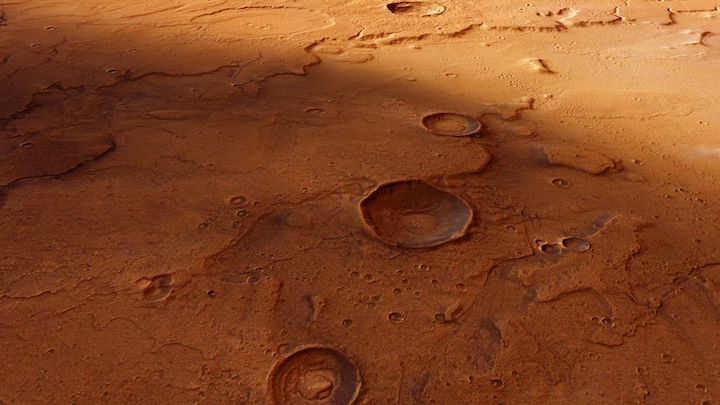5.02.2022
Frequent meteor collisions occurred on the Red Planet for 30 million more years than thought, a new study suggests.

Early chances for life on Mars might have been diminished by meteorites.
A new study suggests that a period of heavy cratering on the Red Planet (and elsewhere in the solar system) persisted 30 million years longer than thought. Studies of the Late Heavy Bombardment, as this period is called, also has implications for the rise of life on Earth.
The new study is largely based upon a meteorite known as Northwest Africa (NWA) 7034, nicknamed "Black Beauty." The meteorite includes part of the ancient crust of Mars during the period considered for study, which is nearly 4.5 billion years ago.
A fresh look at the meteorite (first found in 2013) found signs of "shocking", or very high-intensity damage during a meteorite impact. A proxy of such shocking is an element called zircon, which only occurs during the largest and most powerful meteorite impacts.
"The type of shock damage in the Martian zircon ... has been reported from all of the biggest impact sites on Earth, including the one in Mexico that killed off the dinosaurs, as well as the moon, but not previously from Mars," study lead author Morgan Cox, a Ph.D. candidate at Curtin University in Australia, said in a statement.
Black Beauty is about 4.45 billion years old, which has larger implications for the rise of life on Mars. Previously, a majority of studies suggested that large meteorite impacts on Mars ceased 30 million years before that period, or roughly 4.85 billion years ago.
Early Mars was considered a warmer and wetter environment, with a thicker atmosphere that may have allowed life to persist on the surface. Over the eons, however, the Red Planet lost most of its atmosphere and today is very arid.
The amount of water available on the surface or underground today is highly debated; a study released just weeks ago, for example, suggests that a purported polar underground water reserve may just be volcanic rock. Meanwhile, an independent study of NASA Mars Reconnaissance Orbiter images suggests water may have persisted on the surface longer than previously suggested.
Water is one metric that might suggest a life-friendly environment, but meteorites would also be important. If an area is continually pummeled by space rocks, that provides a less stable spot for microbes to persist.
"Prior studies of zircon in Martian meteorites proposed that conditions suitable for life may have existed by 4.2 billion years ago based on the absence of definitive shock damage," co-author and planetary scientist Aaron Cavosie, who is also from Curtin, said in the same statement.
"Mars remained subject to impact bombardment after this time, on the scale known to cause mass extinctions on Earth. The zircon we describe provides evidence of such impacts, and highlights the possibility that the habitability window may have occurred later than previously thought, perhaps coinciding with evidence for liquid water on Mars by 3.9 to 3.7 billion years ago."
It is likely that other Martian meteorites will need to be examined or re-examined for evidence of zircon, in an effort to further support the findings, however. A study based on the research was published in Science Advances on Wednesday (Feb. 2).
Quelle: SC
